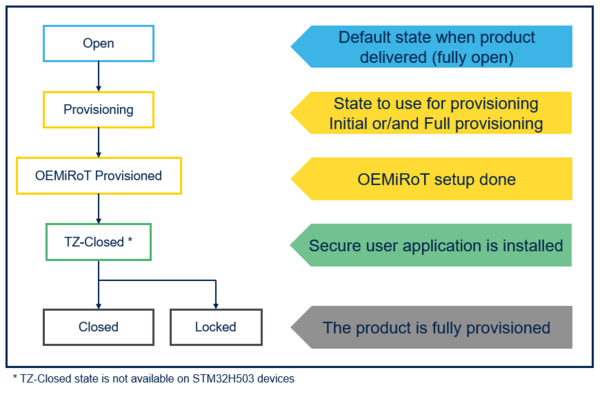1. Introduction
On the STM32H5 series the product life cycle is based on the product state setting.
From the development phase until the maintenance phase a product can be configured under many product states ( also called lifecycle states).
2. Full Product State Life cycle implementation
![]()
![]()
STM32H573/563 with TrustZone enable implements full life cycle mentioned in product state. Debug Authentication supports Regression and Debug Re-opening via Certificate method.
STM32H573/563 with TrustZone disable implements a subset of the life cycle mentioned in product state with Product State "TZ-Closed" removed. Debug Authentication only supports full Regression via Password method.
3. Reduced Product State Life cycle implementation
![]()
Without TrustZone available, only subset of the life cycle depicted in product state with Product State "TZ-Closed" removed.
Debug Authentication only supports full regression via Password method.
The regression password is one time programmable only. This means that once it's set on the device, it cannot be modified, not even after a successful regression.
4. Product states
4.1. Usage and Boot
4.2. Ressources access overview
4.3. STM32H5 Interfaces
* AN2606 Application note STM32microcontroller system memory boot mode
5. Lifecycle
The figure below shows the product states of the product along the lifecycle phases : During the product life, the solution must guarantee that the ROT (Root Of Trust) and user assets are never disclosed. This must be true for all four phases stated above.
6. References
- RM0481 Reference manual for STM32H573/563/562
- RM0492 Reference manual for STM32H503
